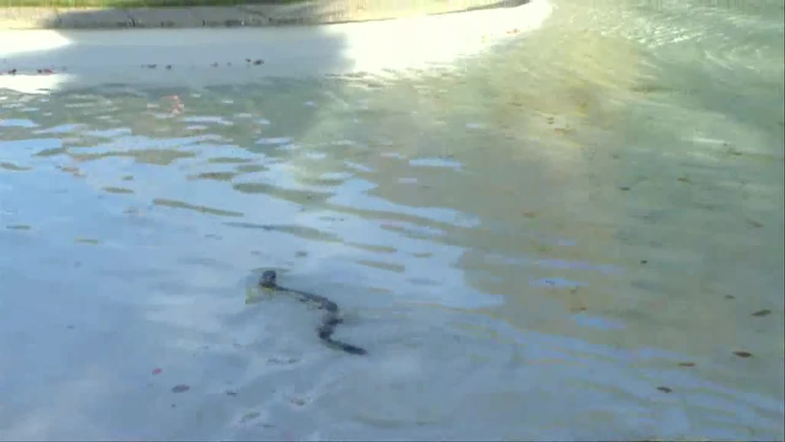A Robotic Water Snake To Sniff Out Pollution [Video]
Slithering snakebot will be let loose in Lake Geneva

As it glides through the pool, its resemblance to an eel is eerie–an eel, perhaps, that someone borrowed from a backyard tool shed.
This is the amphiBot — a nearly meter-long black and yellow piece of plastic with the body of a machine and the moves of an animal. It’s a water-snake robot developed by a group of Swiss researchers at the École Polytechnique Fédérale de Lausanne. The robot was originally developed to help biologists understand the neurobiology of snakes and amphibians.
But now the amphiBot is being taken apart and reborn as a slightly larger, significantly smarter snake, with a brand new task: tracking down pollution in freshwater lakes.
The new snake robot has been nicknamed the Envirobot. It’s still in the building stage, needing the sensors that will help it navigate and carry out its collection duties. Upon comit won’t just move like an eel, but will sample water, test it for contaminants, and send back the information to researchers via cellular or wireless networks. The researchers intend to release the Envirobot in Lake Geneva within the next few years.
The Envirobot is a big step up from the amphiBot, says Alessandro Crespi, a robotics engineer at the EFPL who is helping build the robot. For starters, it’s autonomous, so it doesn’t need a remote control to help it get from point A to point B.

Amphibot III
It also needs additional equipment like a GPS, external antenna, and other sensors to help the robot detect where it is in space. And then it can start tracking pollution.
“One of the big challenges of the project is managing to embed these [pollution sensors],” says Crespi. Normally, the lab equipment for measuring contamination is much larger than the approximately 15-centimeter long compartments that when chained together, make up the snake’s body.
The devices include traditional electrochemical sensors to detect heavy metals like lead and biosensors with living organisms like bacteria that are sensitive to pollution.
In addition to sending back information about its samples, the Envirobot will actually trace how pollution moves in the water to see where it came from. “We would like to follow the [chemicals] going toward the pollution and see where the maximum concentration is,” says Crespi, similar to the way a dog might sniff out a treat. Except the robot might find a fertilizer runoff or a chemical spill.
The Envirobot is 3D printed from epoxy resin. “Generally 3D-printed stuff is porous,” says Crespi, but not the epoxy resin; “This one is guaranteed to be waterproof.” He also says that 3D printing allows the team to print out shapes that are difficult, if not impossible to produce otherwise, like the concave case for batteries.
But why use a snake to track pollution? “Snakes are really, really excellent in [navigating] cluttered systems or anything sort of disorganized,” says biologist Henry Astley, a postdoctoral fellow at the Georgia Institute of Technology.
And though Crespi has no scientific validation of this yet, he suspects, “that a lamprey-like robot will create less turbulence in water, which means if there are pollutants in water we will mix them less than with a traditional propeller.”
Of course, if you’re one of the 51 percent of people who are afraid of snakes (according to a 2001 Gallup poll), it’s probably not comforting to watch this video of an amphiBot easily outswimming its human competitor.
Crespi says not to worry: “The swimmer was not an Olympic champion–he was relatively slow. I think the robot couldn’t compete with a good swimmer.”